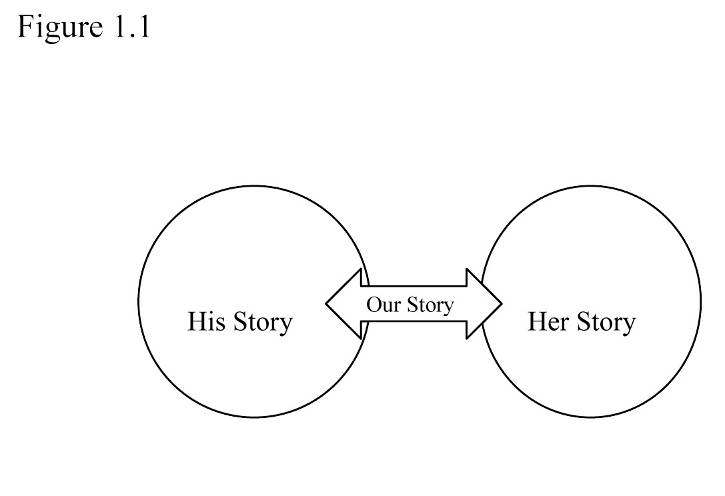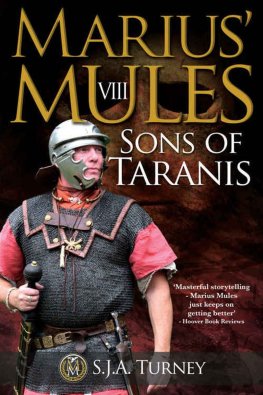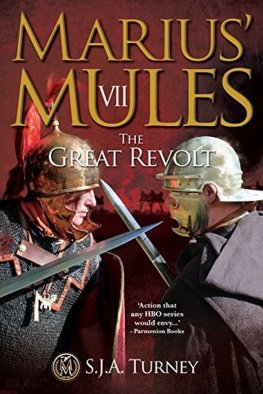EVERYBODY HAS ASTORY
A Practical Approach toMarriage
Howard Moose Turney,Ph.D.
Published by The Educational Publisher Inc.at Smashwords
Biblio Publishing
Biblio Publishing.com
Copyright2014 Howard Moose Turney
ISBN: 978-1-62249-227-5
Table of Contents
?
Foreword
Marriage is a unique arrangement, which iscreated when two people become as one, so the wedding vows say.That may be part of the problem. While the thought of spending alifetime with that one special person can be appealing, long-termmarriages may not always turn out as couples had imagined. Adaptingto the reality of matrimony is the focus of this writing.
This book is the result of over 25 years ofexperience working with couples and families. I have had theprivilege of sharing the stories of couples who were facing allkinds of difficulties. These rich stories have providedthought-provoking material. I am grateful to these couples whoopenly revealed some of their deepest hurts as well as theirgreatest joys. The resilience of couples continually amazes me.
There are a number of stories in the bookthat serve as examples of my encounters with couples. All of thenames and situations have been altered to protect the identity ofthe marital partners.
My work with couples grows out of trainingin marriage and family therapy. I received clinical training atFlorida State University. I have continued to be a student of thisdiscipline since my formal training ended. As my career evolved, itbecame apparent to me that our relationships are at the center ofour lives. It has become obvious to me that our most importantrelationship is with our spouse. Without the intimacy of a closepartner, we lack an important way to define ourselves.
I consider my wife Jane, to whom I have beenmarried 28 years, to be my most important relationship. I havelearned as much from her and our relationship as I have from booksand journal articles. My understanding of the world is compoundedby my relationship with my son, Bo, whose observations about hisparents relationship are instructive. The rich wisdom that comesfrom Jane and Bo has clearly influenced the path of my career.Their endless encouragement to complete this book has provided thenecessary motivation to accomplish the task.
The second most important relationship iswith my business partner and marital therapist, Rebecca FullerWard. Together we make a great team. The two of us have conductedmarriage retreats, taught psychiatry residents and social workstudents, given lectures together, seen couples as co-therapists,and learned from each other. Rebecca is bright, witty, warm, andthoughtful. Together we have shared clinical insights, socialoccasions, continuing education, and all sorts of work and playactivities. I am extremely grateful for our relationship.
There are numerous friends and colleagueswho have helped shape me as an individual and a professional. Thesepeople are too numerous to mention, but certainly deserverecognition.
There are a myriad of influences on mywriting from the field of marriage and family therapy. Mostimportantly, the Bowen Theory, Cognitive Behavioral Theory, andNarrative Therapy have helped shape my understanding of couples.These theories are the foundations for understanding humaninteractions and my work with couples.
I hope you will benefit from the philosophyof marriage presented in this book. There are no tricks or gadgetsto finding marital bliss. The outcome I pursue with couples isunderstanding. Understanding comes from self-reflection, insight,and a willingness to hear and be heard. This is a process thatoccurs over time, not overnight. My hope is that this book willgive you new ways to think about your marriage and allow you tocreate a relationship that is satisfying, content, andcomplete.
Howard M. Turney Ph.D.
Chapter 1
You AreNot Alone
Marriage is hard. Our ability to laugh atourselves and accept the irony of our relationships is the key tosuccess in relationships. There is no denying that marriagechallenges the best and the worst in anyone who ventures into thissacred bond. Early in our relationships another person oftenenamors us and our emotions can get in the way of good judgment.When first in love we believe that love will prevail nomatter what. Soon after we make that commitment to one person wethen realize that there are a few things that we reallyought to change in our new spouse. Unfortunately we do notrealize that our partner is behaving in a certain way for a reason.That reason is all part of a story that becomes part of the larger,more complicated story of our committed relationship.

From my years of working with couples I havediscovered that when two people come together each person bringsunique stories to the relationship (Figure 1.1). How our storiesfit together in matrimony with our partners stories is the testfor marriage. Blending our stories together into one large story isour challenge.
Figure 1.1 above illustrates our first stepto bring stories together as we attempt to merge our unique storiesinto a cohesive narrative that defines us as a couple. Our abilityto accept our own story and comprehend our partners story is thefirst step to blending our story into a larger story that creates apathway for success in our committed relationships. Money, sex,children, stepchildren, in-laws, extended family, economicdisadvantage, disabilities, adultery are a few of the many issuesthat are both challenges and opportunities for committedcouples.
It is often difficult to discern the sourceof our unhappiness, but through careful self-examination, we canimprove our outlook on life. Rather than using blame as anexplanation of our actions in our relationships, it is better toreflect on the influences of our lives that have created the worldas we know it and how we behave in that world. Coming to understandthose colorful characters that have influenced the story line ofour own novel can have a lasting influence on our currentbehavior.
The World As We Know It
The world as we know it is central tounderstanding this approach to marriage. Each of us knowsthe world a little differently. Our knowing is based on the myriadof experiences we have had in work, in past relationships, inmarriage, and in the social context. Each of us has a unique storythat defines us and guides the way we act and react to others,especially our spouse. The next step then is to consider the waythat we think we know the world and how our partner thinks he/sheknows the world. Therein lies the difference many of usexperience.
Tom and Mary were a professional couple whocame to see me soon after they were married. This couple came fromvery different backgrounds. Tom had grown up in an affluent familyand received a private school education. Mary, on the other hand,had grown up in a single-parent household with limited resourcesand a limited education. First, it is important to realize that wedo not need to make any assumptions about Tom or Mary. Characteranalysis does not belong in our new way of thinking. Both broughtunique stories shaped by different circumstances and uniquequalities. While commonalities are important in bringing couplestogether, we do not need to exclude our differences. However, thisis often where couples find their greatest challenges. What is mostimportant is that we have a chance to learn from our differences.Tom and Mary found themselves ridiculing each other sarcasticallyover these differences. As it turned out, Marys modest upbringinghad shaped her character and in fact was one of the most attractivequalities Mary possessed. This marriage focused on Tom endlesslypoking fun at Mary. While the presenting problem for this couplewas described as a
Next page







